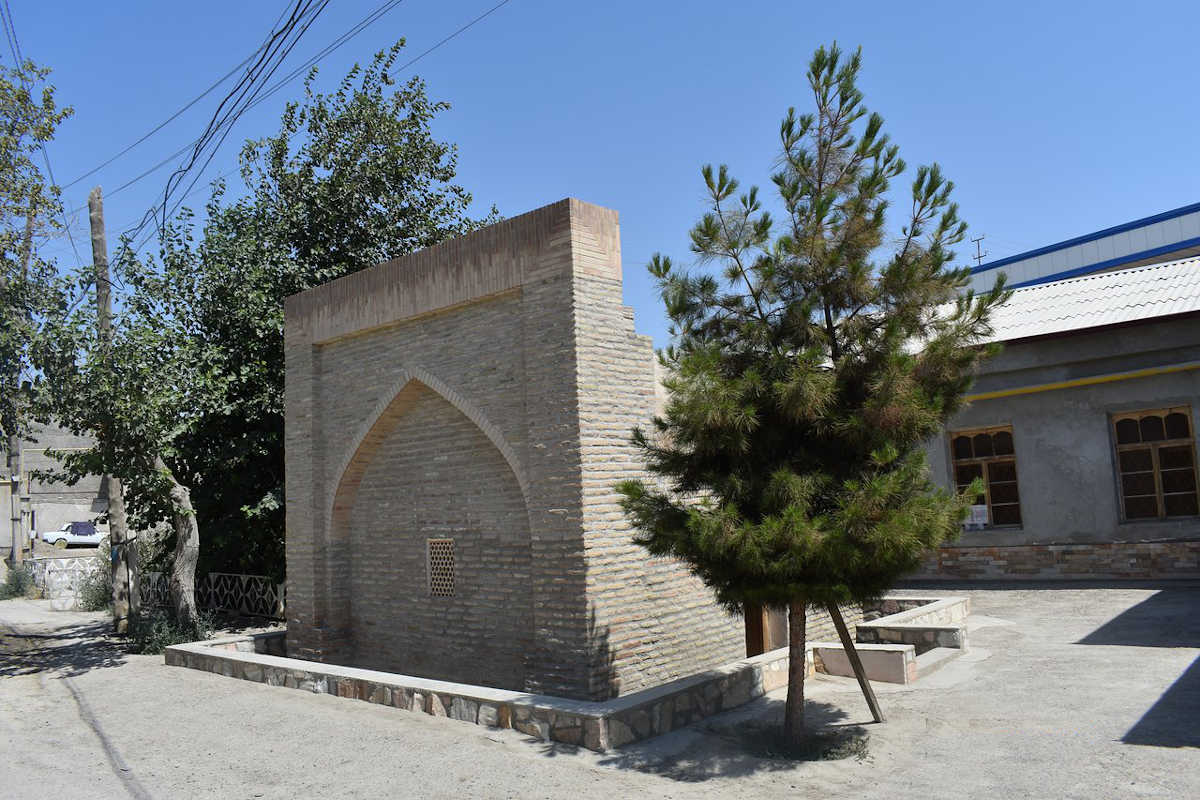Bukhara - Mausoleum of Imam Kazikhan
The mausoleum (the Mazar) of Imam Kazikhan in Bukhara is mentioned in the Book of Mullozoda, where the full name of the Imam is given (Imam Hasan bin Mansur bin Mahmud bin Abdu-laziz Margilani). It is also reported here that “Khazrati Imam Kazikhan” was a judge (Qozi) in Bukhara and wrote several books.

A very interesting legend about him has been preserved in Bukhara. Hulagu Khan came to Bukhara with his troops. He announced his intention to destroy Bukhara if he did not receive a correct answer to the question of who had led him to the heads of Bukhara.
The people of Bukhara asked for forty days to think it over, but could not produce anything satisfactory. Finally, there was a boy in a maktab (school) who undertook to answer Hulagu Khan.
As the time limit was running out and no more honourable solution could be found, they decided to send this boy to Hulagu Khan. The boy asked that a camel and a large white goat be brought to him and that he himself be sent to Hulagu Khan in a palanquin (maofa).
When Hulagu Khan saw the boy before him, he became angry and said, “Have they not found a greater, have they not found a white-bearded old man, that they might send a child to me?”
The boy replied, “If you need someone tall, here is a camel. If you want someone with a white beard, here is a goat. If you want an answer, here it is. Who brought you to us? You were guided by our bad deeds.”
Hulagu Khan was surprised at the boy’s wisdom and said, “I have travelled through many countries and no one to whom I asked this question could give the right answer, but you have found a good answer to which there is no objection. You can ask whatever you want.” The boy asked to be given as much land as the camel’s hide would bear. The boy had a camel slaughtered and its hide split into thin strands and surrounded the city with them. This is how he got Bukhara from Hulagu Khan.
Where the strands lay, he had a wall built. They started to build the wall, but he was gone. Through clumsiness, the builders took the clay for the wall from the city side and that is why the city ended up in a valley, there was no moat outside.
When the boy came back, he was very angry with himself for not specifying where the earth should be taken from: “If you had taken the earth from outside, you would have got an impregnable fortress”.
The boy attained sainthood and became famous under the name Imam Kazikhan. His tomb (mazar) was considered to help with illnesses. The mausoleum of Imam Kazikhan in Bukhara was highly revered and was never ridden past on a horse (you got off the horse when you rode past).
Hulagu Khan in the life of Imam Kazikhan
Hulagu Khan (1217 – 1265, Maraga, Iran) – grandson of Genghis Khan, brother of Grand Khan Munke – the head of the Mongol Empire, founder of the Hulaguid dynasty and state.
It is known that in 1256 Hulagu Khan led the army of Eastern Christians, the majority of whom were Turks – Nestorians, in an unprecedented crusade into the Middle East.
Hulagu defeated the Ishmaelite state in Iran (1256) and the Abbasid Caliphate (1258), fought the Mamluks in Syria (1260) and the Golden Horde (1262). In 1256 he proclaimed himself ruler, although he nominally recognised the suzerainty of the Great Khan, from whom he received the title “Ilkhan” (Khan of the tribe) in 1261.
On the tomb, the years of Imam Kazikhan’s life are given as between 1132 – 1212. If this dating is correct, Imam Kazikhan was 85 years older than Hulagu Khan and could in no way be the boy during his crusade.
Moreover, Imam Kazikhan was buried in this mazar 44 years ago when Hulagu Khan was approaching the walls of Bukhara with his army. So, either the dates given on the tomb are not credible or the meeting of Imam Kazikhan with Hulagu Khan is pure fabrication.
In any case, it is very important that Bukhara has preserved the information about such a unique event as Hulagu Khan’s crusade from the East.
